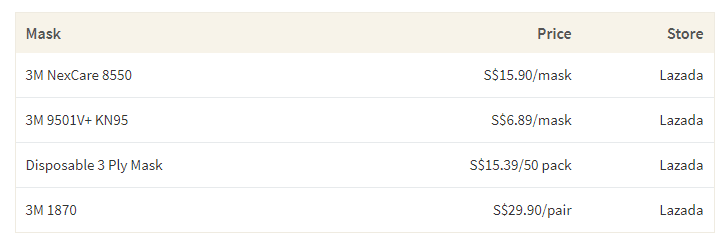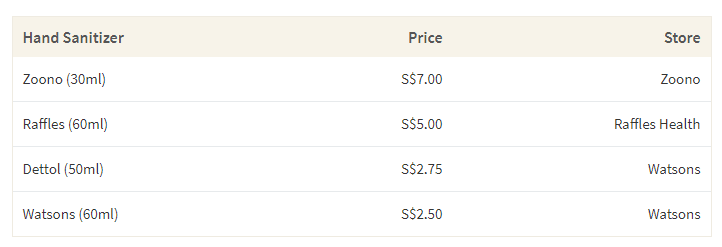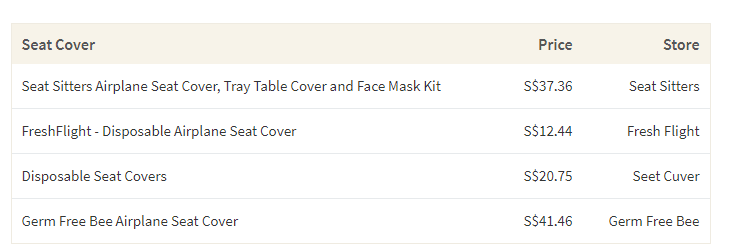Travel in the Post-COVID-19 Era: 5 Items to Pack for a Hygienic Trip
Slowly but surely, travel is resuming. Ahead of the summer holiday season, European countries are slowly opening their borders to visitors from neighboring nations that have COVID-19 transmission under control. Other nations, including Singapore, are also currently considering creating a 'travel bubble' that will allow for business travel to resume on certain routes. Some countries, like Jamaica, Bora Bora, Tahiti and other French Polynesia islands are reopening to all tourists of any origin from June and July 15 onwards with no mandatory isolation period if the traveller has a negative COVID test result (taken within 72 hours of departure) and has travel insurance. With people getting ready to fly again, whether for business or pleasure, there is no doubt that international travel will take on a 'new normal' as airports, airliners and travellers will take extra precautions to avoid spreading disease. If you are thinking about travelling post-COVID, here’s what you should pack to provide peace of mind and reduce your chance of getting sick.
1. Masks
By now, we've become used to wearing masks whenever we go outside. While wearing a mask was heavily contested in the earlier months of COVID-19, experts currently believe that widespread use of face coverings coupled with social distancing can reduce COVID-19 transmission. Since you’ll be in close contact with many people at the airport, wearing a mask can help reduce the risk of transmission when social distancing isn't possible. It’s also important to wear a mask throughout the flight, especially on a full one since you will be sitting close to other passengers. While masks are harder to obtain from commercial retailers at this time as they’re sold out and needed for medical personnel, you can still purchase surgical or non-medical grade masks online for under S$30.00.

2. Disinfecting Wipes
Research has shown that tray tables are some of the dirtiest parts of a commercial airplane as passengers use it to change baby diapers. Tray tables can also contain cold viruses, influenza viruses and norovirus, according to microbiologist Charles Gerba. Respiratory illnesses can be spread through surfaces where droplets of saliva, mucus and other bodily fluids land such as the tray table . On your next flight, pack some disinfecting wipes and wipe down all hard surfaces around your seat, including the tray table, armrest, air nozzles, light switch, seat belt buckle, touchscreen tv, and remote before touching them with your bare hands. You should also wipe your electronic devices before and after placing them on the tray table to ensure that they’re clean. Disinfecting wipes are available at Redmart, Giant and Cold Storage for about S$4.00.

3. Flight Bags
Seat pockets are also one of the germiest parts of a commercial aircraft as people rest their bare feet on them, discard old food, used diapers and other trash containing bodily fluids in there. A study of more than 100 swab samples from 18 different flights has also found evidence that bacteria, yeast or mould are present in seat pockets. Instead of using the seatback pocket to store your water bottle, electronic devices, books or snacks, put them in a flight bag and hang it from the tray table latch. Flight bags can be purchased on Amazon for S$39.00 to S$76.00.

4. Hand Sanitizer
Since you’re going to be touching dirty surfaces on an airplane, hand sanitizers are essential to maintain hygiene while travelling. Hand sanitizer is even more important if you don't wear gloves. After wiping down surfaces, sanitize your hands with antimicrobial sanitizer to kill germs. It’s also important to sanitize or wash your hands with soap before and after eating as it's simply a basic hygiene measure.Store brand, name brand and locally manufactured hand sanitizers are sold at prices between $2.50 to $7.00. You should look for hand sanitizers that are alcohol based and contain at least 60% alcohol. This is because alcohol can attack and destroy the envelope protein that surrounds some coronaviruses. However, you should note that even alcohol-based hand sanitizers have limitations. To ensure that your hands are as clean as possible, combine hand sanitizer use with frequent hand-washing.

5. Reusable Seat and Tray Table Cover
While the plane seats may look clean, airline employees have revealed that seats only get a proper cleaning when the plane is not in service. Beyond dirt, viruses and bacteria such as E.coli and hemolytic bacteria associated with strep throat have also been found on headrests. Even during cleanings between flights, the cabin crew only has time for superficial cleaning for aesthetic purposes, using a napkin or water to wipe down surfaces. While cleaning efforts have been ramped up to prevent COVID-19 transmission, there is still a chance your seat is not as clean as it could be. To minimise exposure to germs on fabric and hard surfaces even after wiping them down, you can invest in a reusable seat and tray table cover to be extra safe. Best of all, these items have use beyond travelling. For instance, you can also use the seat covers in movie theatres or other public seats. Disposable and reusable seat covers range in price between S$12.50 to S$41.50. Some of them even come packaged with with masks, wipes and hand sanitizer so you don’t have to buy the items separately.

How Dangerous Is Flying?
The prospect of flying in a cramped space for hours on end surrounded by potentially sick travellers can give many people anxiety. However, current data suggests that in-flight transmission is relatively rare. Furthermore, airports are taking measures to reduce transmission including conducting temperature screening and requiring the use of face masks. Airlines are also taking extra precautions, with some airlines using highly effective electrostatic spraying to clean their fleets, while others are providing hand sanitizer and enforcing face mask use. Despite these new cleaning measures, going the extra mile won't hurt, especially as airports and flights become more crowded. To reduce your risk of infection during travel maintain social distancing, wash your hands often and wipe down any hard surfaces with antibacterial wipes before use whether on the plane or at the airport. Lastly, make sure you are following proper travel guidelines such as getting tested and providing proof of travel insurance. The new health risks associated with flying won't disappear any time soon, but if you take precautions and understand your risk, you can still enjoy travel as much as you used to.
